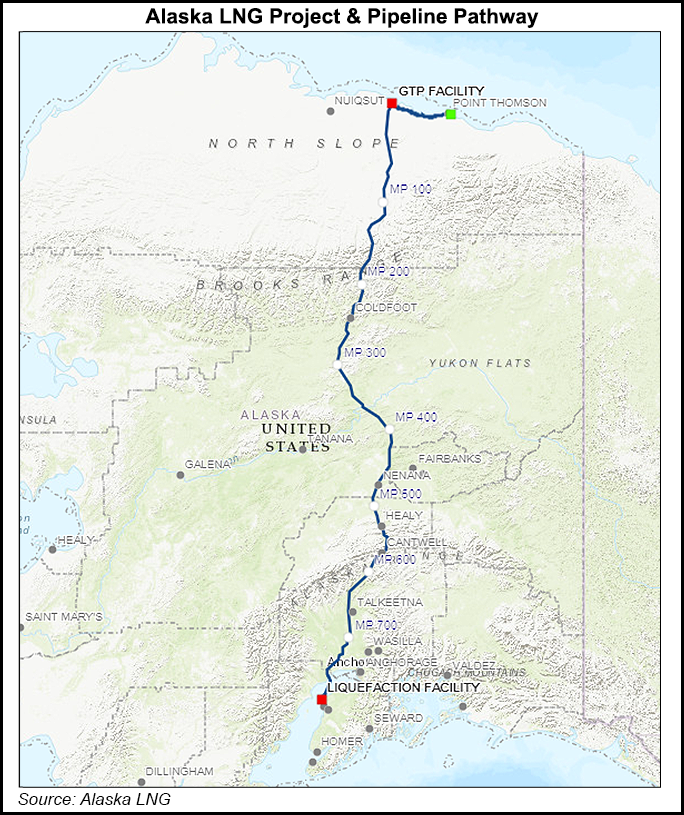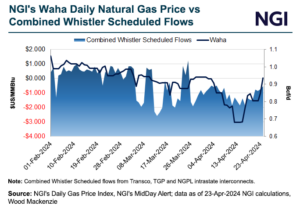LNG | LNG Insight | NGI All News Access | NGI The Weekly Gas Market Report
DOI Approves Issuance of Right-of-Way Permits for Alaska LNG Project
The Department of the Interior (DOI) has approved the issuance of rights-of-way permits across federal lands managed by the Bureau of Land Management (BLM) and National Park Service (NPS) for the Alaska Liquified Natural Gas (Alaska LNG) project.

Two months ago FERC authorized Alaska Gasline Development Corp.’s (AGDC) plans to liquefy and export natural gas produced on Alaska’s North Slope from a plant at Nikiski.
DOI’s decisions, which adopt the Federal Energy Regulatory Commission’s environmental impact statement, “establish the environmental protections for wetlands, wildlife, recreation access and other resources that will govern access for a liquified natural gas pipeline, a major step in the permit process for the project,” the agency said.
“The project includes the potential to supply Denali National Park and Preserve and nearby communities with natural gas,” said Assistant Secretary for Fish and Wildlife and Parks Robert Wallace. “Careful environmental management will ensure park resources, including wildlife, wetlands, vegetation and noise/soundscapes, will be protected during and after construction.”
The project would consist of liquefaction facilities on the Kenai Peninsula designed to produce up to 20 million metric tons/year (mmty) for export, along with an 807-mile-long, 42-inch diameter pipeline capable of transporting up to 3.9 Bcf/d to the liquefaction facilities, a gas treatment plant in Prudhoe Bay and two additional natural gas pipelines connecting production units to the gas treatment plant.
Access across federal lands is required for 230 miles of the pipeline, DOI said. Those lands are mostly managed by BLM, and most of the affected acreage is in the Dalton Highway/Trans-Alaska Pipeline corridor, which is managed primarily as a utility and transportation corridor.
The Department of Energy previously authorized the project to export 20 mmty to nations with which the United States has free trade agreements (FTA), and also granted conditional authorization for exporting 20 mmty to non-FTA nations.
Alaska LNG has faced several hurdles. In May it was reported that the $43.4 billion project was in search of a new sponsor. The AGDC board reportedly hoped someone else could take over the project if an analysis found it was still economically feasible. Without another sponsor the state corporation would likely sell the project’s assets, such as permits and engineering work, according to published reports.
Last year, state-owned AGDC signed an agreement with BP plc and ExxonMobil Corp. to collaborate on ways to advance the project, including identifying ways to improve the project’s competitiveness and secure FERC authorization.
BLM and NPS have each issued records of decision for the project and plan to issue right-of-way permits “in the near future,” according to DOI.
© 2024 Natural Gas Intelligence. All rights reserved.
ISSN © 1532-1231 | ISSN © 2577-9877 | ISSN © 1532-1266 |


